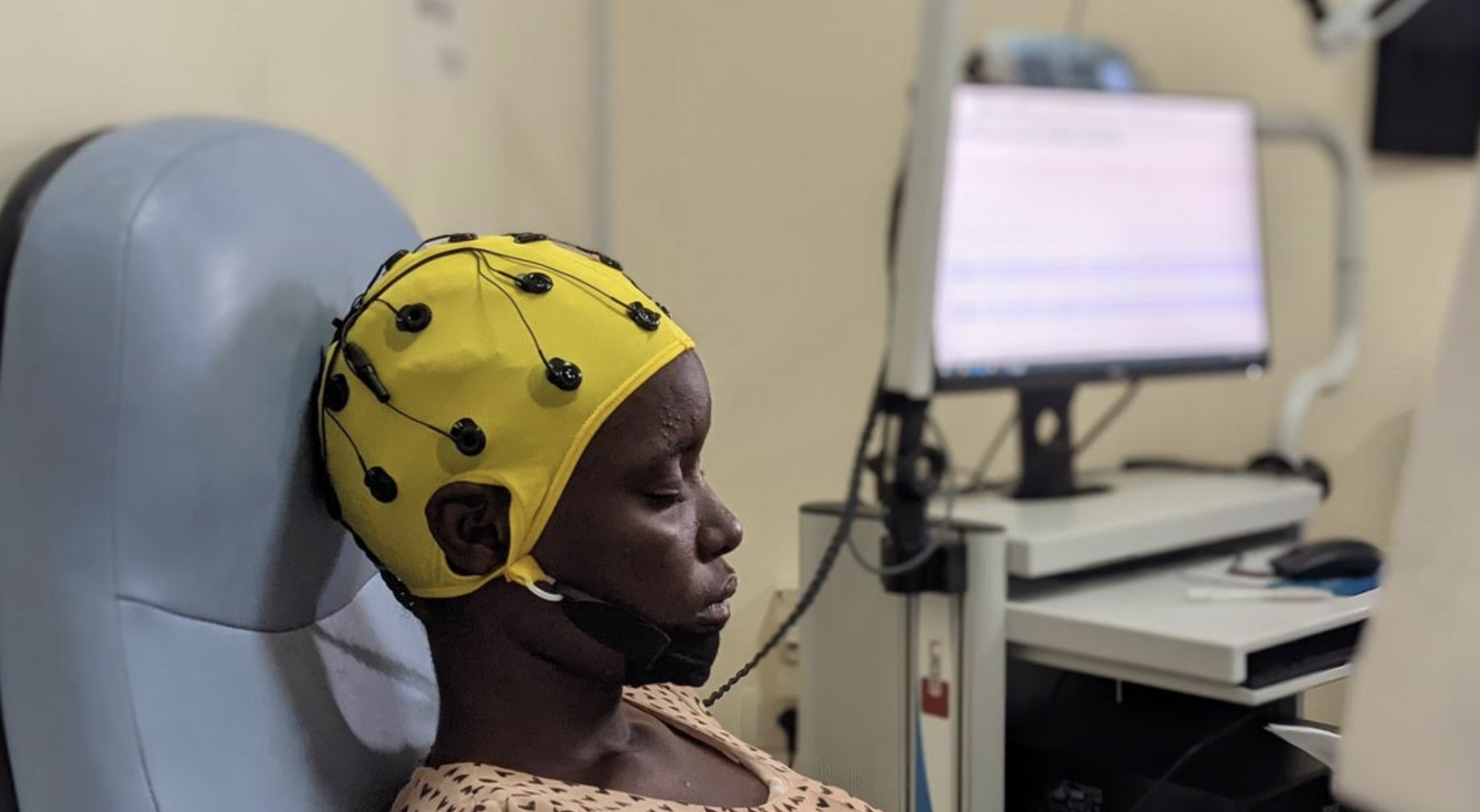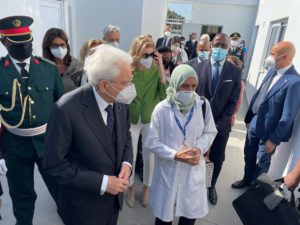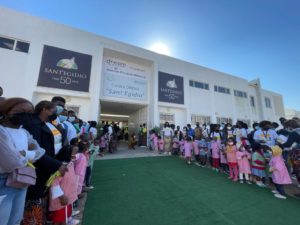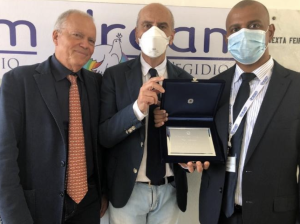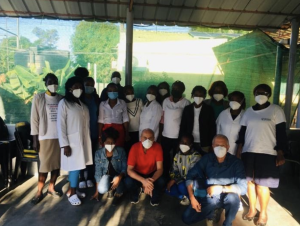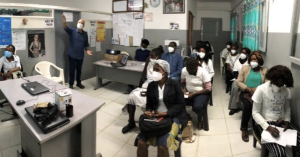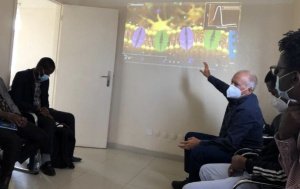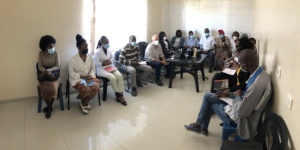Epilepsy Program in Mozambique
Epilepsy Mission June-July 2022
Contents
- Purpose of the “Mozambique” mission
- The President of the Italian Republic Sergio Mattarella visits the DREAM Center in Mozambique
- The country
- Institutional meeting with the Scientific Director of the Maputo Central Hospital
- The DREAM program in Mozambique
- The culture of epilepsy
- Epilepsy managed in mental health facilities
- The teaching courses evoked a new way to look at epilepsy.
- Integrating HIV and epilepsy care
- Facing epilepsy at school, in the family, on the street…
- Children
- Mothers
- Lifestyle
- The curandero
- Old and new coexist
- A new responsibility
- Treating the patients establishes a new culture of epilepsy
Purpose of the mission
A teach and training period on epilepsy was carried out at DREAM centres in Mozambique. This followed a previous course held one year before. More than 50 healthcare primary care professionals took part. Education of healthcare workers of primary care is crucial.
In fact, the vast majority of people living with epilepsy (PLWE) in the country are managed in primary care (named centre de saude) by non physician clinicians, tecnicos de psichiatria or other non doctor health care providers (as in all Sub-Saharan Africa).
Partecipants included doctors, non physician clinicians, and activist nurses from various areas of the country: Beira, Mangachingussura, Quelimane, Mangunde, Barada and other centers of the Sofala region. Personnel of the Beira Central Hospital were also part.
The visit of President of the Italian Republic Sergio Mattarella at the Zimpeto DREAM Center
“Thank you for what has been done here, thank you for what will be done… this is a contribution to Mozambique, to Italy, to humanity“. These were the words of the President of the Italian Republic, Sergio Mattarella, at the end of his visit to the DREAM center in Zimpeto, in Maputo Mozambique on 6 July (photos 1 and 2). The visit disclosed how much relevant is the work carried out up to now by the DREAM program in Mozambique (photo 3).
DREAM, the Italian Society of Neurology, the IRCCS Besta Neurologic Institute, the Global Health Telemedicine (GHT) and the Mariani Foundation are partners of an health program to fight epilepsy in sub-Saharan Africa. This innovative partnership has so far enabled the training on epilepsy of almost 150 African health care workers, installing two video electroencephalographs, one in Malawi the other in Central African Republic, performing over 500 EEGs to African PLWE, and 1600 teleconsultations sent from DREAM African clinicians to Italian neurologists mainly for PLWE. Requests on other neurologic disorders are also sent through the GHT telemedicine platform). These encouraging results set the stage for renewed interest from the Italian Society of Neurology to extend the support to Mozambique where they will donate a video-electroencephalograph to be installed at the DREAM centre in Beira.
The country
Mozambique has 33 millions inhabitants, more than half are under 20 years old; more than 1% of the population suffers from epilepsy, especially young people, and children.
Mozambique is one of the poorest countries in the world, with a very low Human Development Index, 180th out of 186 countries considered. Life expectancy is 56 years for men and 59 for women, with one of the highest mortality rates in the world. Over 60% of the population lives in rural areas where there is lack of infrastructure including health.
The healthcare system is understaffed with proportionally fewer doctors, nurses, and pharmacists than in neighboring countries Malawi, Zambia, and Zimbabwe. Mozambique is among the countries most affected by HIV with over 1.5 million infected, including 800,000 women and 200,000 children. One of the major challenge to fight HIV is retention in care of the patients care. In sub-Saharan Africa more than one third of patients are no longer under treatment after one year, leading to high mortality rate. Problem of retention in care is similarly encountered in the management of other chronic diseases, including neurological ones Studies showed that the treatment gap – which includes retention in care – for epilepsy exceeds 90% in the country. The dramatic insufficient retention tells about how fragile is the health care system in managing epilepsy.
Institutional meeting with the Scientific Director of the Maputo Central Hospital
We met Professor Cesaltina Lorenzoni (photo 5), Scientific Director of the Maputo Central Hospital, at the helm of the Mozambique healthcare system There are only 8 neurologists in the country, but they will double soon. In the capital, Maputo, and in Beira, the country’s second-largest city, over half of the neurological visits is for PLWE ; epilepsy is also the major cause of hospital admissions. In Beira, where the country’s second largest hospital is located, there is only one neurologist. If well cared for, over 70% of PLWE would live seizures free leading a normal life. It’s not easy to find antiepileptic drugs in the country, and with the COVID pandemic it’s even more difficult.
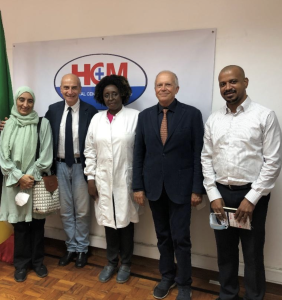
The DREAM program in Mozambique
The Community of Sant’Egidio together with the Italian government played an important role in the process leading to peace in Mozambique signed in Rome in 1992. After then HIV epidemic hit Africa and Mozambique too, but there were no antiretroviral drugs nor know-how as technologies to detect viral load and, fear and stigma were terrific among the society. The first health center of the DREAM program was born in 2002 in Maputo to fight HIV AIDS. Today the DREAM Program, in collaboration with the Ministry of Health of Mozambique, coordinates and manages 12 healthcare centers in different areas of the country to include three molecular biology laboratories , offering free, quality care to around 60,000 patients. Thanks to specialized personnel, the centers offer diagnosis and treatment for HIV/AIDS, tuberculosis, and malaria, but also for non-communicable diseases that are widespread in the country such as hypertension, diabetes, malnutrition, cervical cancer, etc.
Peace is not just the absence of war: good healthcare helps building a culture of peace and maintain it over time.
As underlined by the visit of the President of the Italian Republic Sergio Mattarella, the work of DREAM has strengthened the positive image of Europe and Italy and the good relations with Mozambique. For years, the quality healthcare guaranteed at the DREAM centers has made a decisive contribution to strengthening the social fabric of Mozambique by fostering a climate of trust in the institutions. The latter is an aspect to be valued in an era in history in which globalization seems to put states and nations in serious difficulty in protecting the primary rights of their citizens, first and foremost: health.
The culture of epilepsy
For a large part of the population, popular beliefs are still today among the main and most credible sources of health information. Epilepsy for instance is considered by most to be a mental illness, even feared as a form of curse, or spell, and a disease that can be transmitted, like flu. PLWE are often avoided, even mistreated, and isolated. Epilepsy is scary, and PLWE are stigmatized. It used to be like this in the West too.
Epilepsy managed in mental health facilities
Managing PLWE in mental health facilities has contributed to interpret the disease as psychiatric disturbance. But that was the indication by the major international health institutions, also in Mozambique. In these centers, half of the patients suffer from epilepsy. Those are centers lacking personnel, training, medicines, and equipment, places where the stigma accumulates and becomes painfully concentrated rather than resolved. Notwithstanding local and international institutions conducted plans to improve access to treatment for PLWE in some areas of the country as Beira, the treatment gap there remains high, more than 90%.
Many PLWE end up in the network of healers, false prophets, and pastors of the so-called “prosperity” churches: all of them promise easy cures with the sound of money, a thriving market that leverages need, fear, and ignorance.
The teaching courses evoked a new way to look at epilepsy. Stories emerged from participants
The training courses allowed operators to better understand epilepsy and to change the way most of them were used to see the illness.
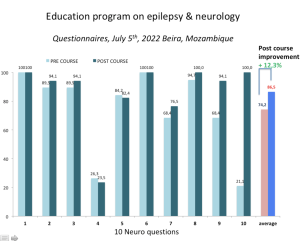
Questions have emerged for which answers hadn’t been previously found, doubts that had remained as such for some time, interpretations of the disease that had not been convincing, and behaviors and habits that had been crystallized in a hopeless, immobile reality. Education program in primary care must be reinforced.
Most of the health professionals then wanted to tell their experience with epilepsy and we dedicated special sessions for this purpose. Cross-sections of life have emerged,: forgotten realities and people, cases in their familiesy, among friends, neighbors, colleagues, schoolmates, and people with seizures met on the street. They made us feel the spread of the disease firsthand, more than we could have ever imagined from the available statistics.
- Integrating HIV and epilepsy care
Manga activist Elena says “For years now, an HIV-positive cousin of mine has been receiving treatment at DREAM. A short while ago, while she was waiting to visit the center, she had an epileptic seizure, she couldn’t stop… how scary… Then we took her home. No one in the family talked about the episode. Secretly from the rest of the family, I managed to talk to her. She was scared but finally, she confided in me. She told me that she had been suffering from it (epilepsy) for some time, she hid the disease out of fear”. Elena is HIV+ , she experienced on herself how bad is stigma of the disease, thank to antiretroviral drugs she is conducting a normal life. She had found the courage to approach her cousin even though she was epileptic – perhaps her affection for her had helped her overcome fears of contagion. She then convinced the cousin not to hide anymore and to seek treatment. Elena was not an expert in epilepsy but certainly in humanity. Now at DREAM, Elena ‘s cousin receives treatment for both HIV and epilepsy. Integrating HIV treatments with those of other diseases is a great advantage for patients otherwise forced to wander from one center to another for HIV, epilepsy, gynecological examinations, hypertension, malaria, etc. Many HIV+ patients stop seeking treatment because they don’t have enough money for transport.
- Meeting the PLWE at school, in the family, on the street…
Ana, DREAM doctor: “When I was in secondary school, a friend of mine had epileptic seizures in class, we were all scared and ran away, even the teachers told us to run away, we all feared contagion”.
Victoria, DREAM doctor: “When my 10-year-old cousin had his first seizure, at home, we didn’t know what it was, what to do, we were scared”.
Luis, coordinator of a DREAM center: “Several times I ran into people on the street who had epileptic seizures, I would run away…”.
- Children
The Mangunde health center is over 5 hours driving from Beira, unless unforeseen events because of the very bad road. At the Mangunde health center many patients suffer from epilepsy as a result of difficult deliveries; but also, for the sequelae of malaria which unfortunately is widespread. Trauma due to difficult deliveries, infections, stroke and malnutrition explain why epilepsy is more frequent in sub-Saharan Africa than other continents.
Before the teaching course many were convinced that epilepsy was more frequent among adults, a belief that arose from what they are used to see: “There are few epileptic children around; we see a lot of adults instead”.
Mario, a DREAM activist explains to us that epilepsy is called “spirito mau“, bad spirit: whoever comes across an epileptic passing by, runs away, and even fears contagion. Children with epilepsy are kept in hiding to avoid hostile acts against them, but also towards their families. The latter could become infected and their members in turn could spread the disease. Thus, even those who do not have epilepsy risk being singled out, and it is easy to lose their job: in the same family, resentment towards the sick child can grow, a crescendo of misfortune. Isolation also exposes girls above all to kidnappings for sexual purposes, they risk becoming HIV positive, marked for life for this too.
Flavia, Manga activist: “My nephew Antonio suffered from epilepsy since he was a boy, he was avoided by others, and he lived isolated. One day, he ran away and disappeared, no one has seen him since, he wasn’t even 19 years old… many years have passed since then but the pain and sadness for his disappearance are still alive… we could have done more… “.
Manga activist Carla “The brother-in-law of a friend of mine was a good and respected school teacher, but since he suffers from epilepsy everyone avoids him and he has given himself up to alcohol: it is very sad to see a professor who was an example for everyone, drunk”. The suicide rate among epilepsy sufferers is very high around here.
- Mothers
In Africa, the mother is held responsible for the child in everything, even for the diseases that can affect the child: if the child has epileptic seizures, the fault can be attributed to the mother. It was the same with HIV where it was usually the husband who transmitted HIV to his wife and then blamed it on his wife. Often mothers of children with epilepsy come alone to visit with the child; the father is not there. Depression is not uncommon among mothers of children with epilepsy.
- Lifestyles
Rosa, activist: “Many patients fall into the fire during seizures. They then go to the hospital, receive treatment, but still see no benefits. I know some of these sick people, they live in slums”, poor barracks where the hearth is always lit, used for boiling water, cooking, heating (the temperature ranges can be considerable), keeping animals and the ill-intentioned away. These are the patients that are in the most difficulty, they often don’t have the resources to pay for the transport to go to the hospital, so they skip visits and remain without medicine for long periods of time. At DREAM, medicine and all services are free.
- The curandero
When Luis, a medical technician, takes the floor, he is excited: “When I was a teenager (5 years ago), in my village not far from here, I witnessed how they treated PLWE. The curandero (local healer) locked them in a shack that was forbidden to be approached. There were excruciating screams that frightened us kids but intrigued us. We secretly peeked, the scene was always the same: the patient was tied up, he was beaten with sticks or something else. Family members watched the scene. When the epileptic seizure ended, the curandero proudly credited himself for having stopped the seizure: “I chased away the spirits, but if it happens again, bring them to me, and I’ll take care of it”. The fame and power of the curandero increased the price of the cure.”
- Old and new coexist
“My niece is 22 years old, when she was 8, she had her first epileptic seizure” says Ana, an activist. “I convinced my family to take the baby to the hospital where they gave her treatment. The family also wanted to give her the herbs given by the curandero. My niece was fine. After many years without seizures, the treatments were suspended. Still, in my family, they are convinced that the healing took place thanks to the curandero”.
- A new responsibility
Florentio activist of DREAM: “I believe we have a responsibility towards these sick people, many have a life not worthy of a human being“. He adds: “I carry with me what I have learned at the course: it is a message of hope to be given back to the sick, to their families,; and to the people too“.
Florentio at the end of his story adds: “Before the course, I was convinced that epilepsy was a contagious disease, I ran away when I met a person with epileptic seizures. I’m sorry I did this, I didn’t know. But now I know.”
Giada , activist “I didn’t know many things about epilepsy, now I know and I want to spread what I have learned. It is great work for the people; it is not easy but little by little we can do it, as we did with HIV”. Antonia, activist “at DREAM, healing forever is at home“.
- Treating the patients establishes a new culture of epilepsy
Maria, a nurse: “Throughout our many years of work at DREAM, we have acquired the trust of patients and people, now we have credibility: this makes the message we give much more effective.” She adds: “We give health to the sick: well-treated patients say even more than words, namely that epilepsy can be fought, and that social stigma can be defeated. Treating the sick well changes people’s mentality, and defeats fear and loneliness, we have seen this over 20 years of HIV treatment. Now the time has come to do the same for epilepsy”.
